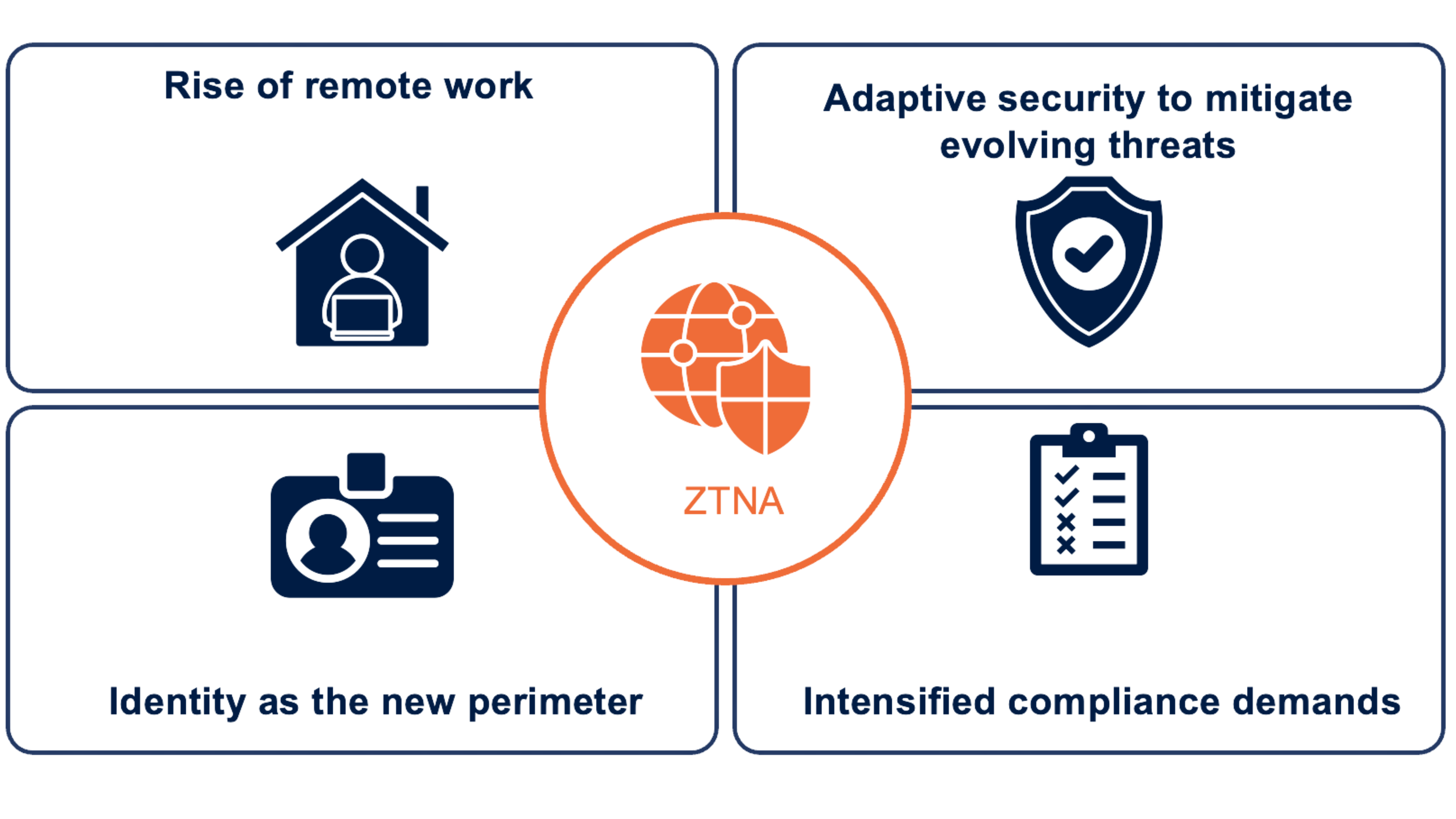
- The rise of remote work has rendered traditional VPNs obsolete
VPNs provide broad network access and often struggle with performance, scalability, and security. As organizations adopt hybrid work models, there’s a growing need for application-specific, identity-aware access. This is because traditional VPNs grant broad network access, increasing risk and reducing visibility. In contrast, ZTNA allows precise access control per application and user, better aligning with modern hybrid work models and cloud-first strategies. In fact, 92% of organizations express concerns that VPNs may jeopardize their ability to maintain a secure environment [1].
- Compliance demands are intensifying across industries
Regulations such as NIS2, DORA, and GDPR now require organizations to demonstrate strong access controls, visibility, and auditing capabilities. ZTNA helps organizations align with these requirements by:
o Enforcing least-privilege access
o Providing detailed access logs for audit readiness
o Centralizing controls to simplify compliance reporting
These capabilities make it easier to meet and demonstrate adherence to regulatory frameworks. In line with this trend, 80% of security leaders are pursuing vendor consolidation strategies to streamline compliance efforts and reduce complexity [2]. ZTNA supports this by replacing fragmented remote access tools with a single, identity-driven platform that simplifies control and compliance.
- Identity is the new perimeter
As users access resources from anywhere, identity has become the foundational element of security. ZTNA enables dynamic access decisions based on user identity, role, device posture, and behavior, providing more precise control than traditional network-based models. Gartner highlights that misuse of credentials remains one of the most common attack vectors, reinforcing the importance of identity-centric controls [3]. By tying access strictly to verified identity, role, and device context, identity-centric controls prevent unauthorized access even when credentials are stolen, reducing the risk of lateral movement and privilege escalation.
- Security must be continuous and adaptive
Threats evolve rapidly, exploiting even minor security gaps in seconds. Static policies can’t keep up—access decisions must adapt in real time based on changing risk signals, user behavior, and threat intelligence. This adaptive access control allows organizations to align user privileges with evolving threats and compliance needs while helping mitigate insider threats and lateral attack movement. Gartner has identified Identity Threat Detection and Response (ITDR) as a key strategy in enabling this level of continuous security posture management [4].
The future of security with Zero Trust
Zero Trust is a continuous journey, not a one-time deployment. Kicking off with ZTNA creates momentum, strengthens your foundation, and sets the stage for broader transformation. It enables secure, scalable access and reduces exposure while keeping your workforce productive. If you’re serious about modernizing your security posture, ZTNA is where that journey begins.
Sources:
1. https://www.cybersecurity-insiders.com/2024-vpn-risk-report-hpe/
2. https://www.cybersecuritydive.com/news/security-risk-management-trends-gartner/608452/
3. https://www.gartner.com/en/newsroom/press-releases/2022-03-07-gartner-identifies-top-security-and-risk-management-trends-for-2022
4. https://www.gartner.com/en/newsroom/press-releases/2022-03-07-gartner-identifies-top-security-and-risk-management-trends-for-2022